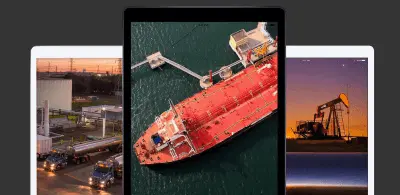Steep fluctuations in the prices of energy commodities and evolutions in the energy markets mean that traders, marketers, and risk managers need to make swift adjustments to their strategies and asset portfolios.
Outdated systems that were designed 30 years ago are simply not agile enough to meet today’s need. So, it’s time to assess your existing CTRM/ETRM systems to see if they are fit for purpose. Does your system accommodate your strategy, processes, organizational structure, and the regulatory environment? Does it accommodate renewables? Or does the cost of maintaining it outweigh the cost of upgrading – not only the cost of the software itself, but the opportunity cost?
The Problem with Legacy Systems
#1: On-Premise Technology
In the past, CTRM/ETRM legacy systems were built using old on-premise, client-server technology. Most suppliers have left these technologies behind for several reasons. Not only are they inefficient in terms of today’s requirements, professionals with experience in maintaining these systems are few and far between, making support very expensive.
#2: Siloed Data Sources
Legacy systems were designed to handle siloed sources of data. This makes it difficult to generate reports that require the analysis of data from distributed sources. The manual collation of data is time-consuming and poses the risk of human error.
Legacy systems are not capable of analysing real-time data from multiple streams like modern CTRM/ETRM systems. Quick and easy access to structured and unstructured data from market feeds, supply chain disruptions, equipment, and inventory can help traders save time and evaluate operational risks to seize profitable opportunities.
#3: Lack of Agility
Energy trading is changing. There is so much dynamism stemming from geopolitical events, changes in regulations, and technology. That’s why businesses need agile solutions that adapt to these changes easily and quickly, increasing business process efficiency. Old CTRM/ETRM legacy systems are not well-suited for such changing environments. They are rigid and in some cases, some processes need to be performed outside of the system which is far from ideal. These old static systems capture trades, manage positions and risk, and so on, but they don’t support decision-making and have limited reporting capabilities.
Obstacles to Change
Below are a few possible reasons that organizations avoid upgrading ETRM software and why those reasons are not applicable anymore.
- Implementation time and disruption of business processes: Senior management may be concerned about the time and disruption involved in implementing a new system. However, new systems take far less time to deploy and cause less disruption compared to the old systems. Concerns are based on remembering the inconvenience of setting up old systems, but things are very different today.
- Training time: Training everyone on how to use a new system can take time but given the developments in user experience over the past several decades makes the learning curve shorter. Interfaces are designed to be intuitive and easy to adapt to, so while the time spent on training may be mildly inconvenient, once everyone is familiar with the new system, your company will be able to get ahead.
- Implementation costs: The limited functionality of legacy systems meant companies had to request the development of new features. The cost of development and implementation of these custom features were steep. Again, the memory of how things used to be is – understandably – an obstacle in the minds of some decision makers. However, with a much broader range of functionality that is more advanced than ever before, this situation will not arise again.
- Sunk costs: Sometimes, investment in the existing ETRM system along with user training costs deter businesses from upgrading, no matter how much they may benefit from something more optimal. However, there is nothing to gain from continuing to use outdated systems that are not fit for purpose and there is more to lose by not implementing a new system. Think of all the time that could be saved due to increased efficiency, automation and advanced analytics; there’s certainly more at stake in terms of wasting future resources compared to what’s already been invested.
- Risk: Choosing a new type of software in any scenario involves a degree of risk but again, there are also risks involved with keeping the old systems, such as falling behind the competition and being without a solution that can meet the needs of today’s markets.
Say Goodbye to Old Legacy Systems
CTRM/ETRM systems have been commercially available for the past 30 years. Technology has developed astronomically within that time – new programs or modules are much more efficient and are up to date, drawing from current knowledge regarding regulatory compliance. Below are some of the reasons to embrace the change.
#1: Cloud-Based Technology
Cloud-native solutions are becoming the first choice for CTRM/ETRM system today. They do not disrupt your business processes and can be installed quickly and easily, unlike outdated on-premise solutions. Even businesses that prefer an on-premise mode of delivery are inclining towards modern, flexible, and agile solutions with web-enabled, user-friendly interfaces. Overseeing the pace and frequency of changes in the energy industry, the architecture of the CTRM/ETRM system also has a critical role to play.
Adding new features is no easy feat with legacy systems. However, the flexible deployment options for SaaS based systems allow for quick and easy updates without disturbing business processes.
The increase in remote and hybrid working demands new technologies. New systems enable easy access from any location in a secure manner. Security threats have evolved alongside technology and the threats are greater when it comes to remote access on old systems that were not designed for it. With a modern, cloud-based ETRM/CTRM, the risks of cyber incidents are greatly reduced.
#2: Agility
Modern systems are able to keep up with market changes easily and quickly, increasing process efficiency and can be easily customised to the precise needs of individual trading companies.
They are equipped with advanced analytics modules including energy trading risk management strategies that offer complete visibility and valuable insights. This facilitates data-driven, profitable decision-making.
Decision support capabilities allow for simulations to answer all the “what if” questions. The technology behind predictive analytics was in its infancy when ETRM systems were first invented – outdated systems simply cannot compete.
The modularity of new systems allows for flexibility and shorter development cycles means new features are brought to market quickly.
#3: Reduced Cost
With less maintenance, support and implementation costs, a new system is well worth the investment. They provide better value due to their range of advanced features that are necessary for today’s markets. You get much more for your money than you ever did for a legacy system.
#4: Vendor Landscape
Over the years, the number of mergers and acquisitions has increased in the CTRM/ETRM sector with multiple solutions falling under a single provider. Sometimes, this may lead to issues in support and high premium fees. However, many emerging players are offering modern solutions with a mix-and-match approach. This enables users to make informed choices on procurement, selection and support.
#5: Integration
Old systems were based on old architectures and are difficult to integrate with other systems. New ETRM/CTRM systems do not have this problem and can integrate seamlessly with software such as ERP systems. They can also integrate seamlessly with internal and external data systems, providing a single integrated workflow.
#6: Support for Renewables Trading
Systems specialised for renewable energy sources did not exist until recently. Any firm that trades renewables can benefit from systems that cater to their unique needs in this regard.
How to Make the Right Choice
Here are some important questions to consider when choosing an ETRM/CTRM system:
- Does the software integrate well with your existing data feeds and back-office software?
- Does your vendor have proven experience and expertise in replacing legacy systems?
- How long it will take to procure and implement?
- What implementation approaches do they follow?
- How do they handle data conversion and prior period processing?
- How strong is their customer support and training? What methods do they use to help departments and employees through this process?
- What are associated integration/migration risks and how are they managed?
- What replacement strategies and tools do they use to ensure a seamless transition?
Choosing and implementing the right CTRM/ETRM solution is not like a one-size-fits-all approach. Evaluate your business needs and understand vendor expertise and deliverables.
Final Thoughts
Energy commodity trading is constantly evolving in accordance with regulations, geopolitical events, and price fluctuations – you need a CTRM/ETRM system that is equally agile. Legacy systems do not perform well in such environments which why adopting a modern, cloud based ETRM software is the answer.
Inatech is a global provider of smart, cloud-native energy trading and risk management solutions with more than 20 years’ experience in international markets. With exclusive benefits including best-in-class advanced tools, ongoing customer support, seamless integration and no recurring implementation costs, you can rest assured that your business will adapt to the ever-changing modern technological landscape.
To find out more about replacing your old ETRM seamlessly, get in touch with us today!


